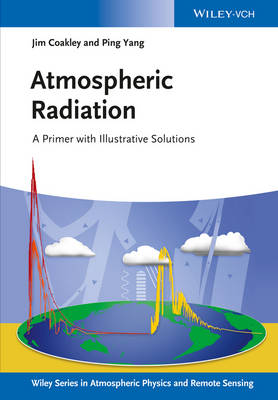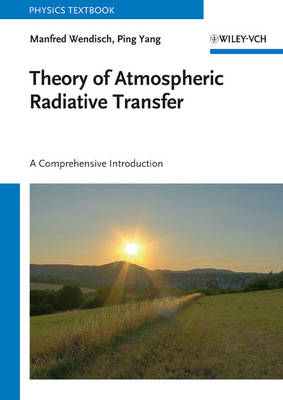Wiley Series in Atmospheric Physics and Remote Sensing
3 total works
This textbook is a first-look at radiative transfer in planetary atmospheres with a particular focus on the Earth's atmosphere and climate. It covers the basics of the radiative transfer of sunlight, treating absorption and scattering, and the transfer of the thermal infrared. The examples included show how the solutions of the radiative transfer equation are used to evaluate changes in the Earth?s energy budget due to changes in atmospheric composition, how these changes lead to climate change, and also how remote sensing can be used to probe the thermal structure and composition of planetary atmospheres. The examples motivate students by leading them to a better understanding of and appreciation for the computer-generated numerical results.
Aimed at upper-division undergraduates and beginning graduate students in physics and atmospheric sciences, the book is designed to cover the essence of the material in a 10-week course, while the material in the optional sections will facilitate its use at the more leisurely pace and in-depth focus of a semester course.
Aimed at upper-division undergraduates and beginning graduate students in physics and atmospheric sciences, the book is designed to cover the essence of the material in a 10-week course, while the material in the optional sections will facilitate its use at the more leisurely pace and in-depth focus of a semester course.
Aimed at the senior undergraduate and graduate level, this textbook fills the gap between general introductory texts offering little detail and very technical, advanced books written for mathematicians and theorists rather than experimentalists in the field.
The result is a concise course in atmospheric radiative processes, tailored for one semester. The authors are accomplished researchers who know how to reach their intended audience and provide here the content needed to understand climate warming and remote sensing for pollution measurement. They also include supplementary reading for planet scientists and problems.
Equally suitable reading for geophysicists, physical chemists, astronomers, environmental chemists and spectroscopists.
A solutions manual for lecturers will be provided on www.wiley-vch.de/supplements.
The result is a concise course in atmospheric radiative processes, tailored for one semester. The authors are accomplished researchers who know how to reach their intended audience and provide here the content needed to understand climate warming and remote sensing for pollution measurement. They also include supplementary reading for planet scientists and problems.
Equally suitable reading for geophysicists, physical chemists, astronomers, environmental chemists and spectroscopists.
A solutions manual for lecturers will be provided on www.wiley-vch.de/supplements.
Radiative Transfer Processes in Weather and Climate Models
by Xianglei Huang and Ping Yang
Published 20 January 2021
In the first book dedicated to this topic, the authors review the development of fast radiation schemes suitable for large-scale atmospheric models, including numerical weather forecast models and atmospheric general circulation models for climate studies.
The text provides readers with the background and evolution of these models, offering a practical guide for real hands-on experience for implementing and modifying their own weather and climate models, such as the consideration of radiative transfer schemes in numerical weather prediction and the radiation budget in climate modeling. In addition, radiation transfer in other modules of the climate system models is explained, such as in land surface and in ocean and sea ice models.
The authors present a balanced emphasis on the science and technical aspects of the problem, keeping the description of each modeling center brief and specific to its own particular model, with little articulation and explanations of the scientific merits and links to radiation schemes used in other models.
A useful tool for both graduate students and experienced researchers.
The text provides readers with the background and evolution of these models, offering a practical guide for real hands-on experience for implementing and modifying their own weather and climate models, such as the consideration of radiative transfer schemes in numerical weather prediction and the radiation budget in climate modeling. In addition, radiation transfer in other modules of the climate system models is explained, such as in land surface and in ocean and sea ice models.
The authors present a balanced emphasis on the science and technical aspects of the problem, keeping the description of each modeling center brief and specific to its own particular model, with little articulation and explanations of the scientific merits and links to radiation schemes used in other models.
A useful tool for both graduate students and experienced researchers.


